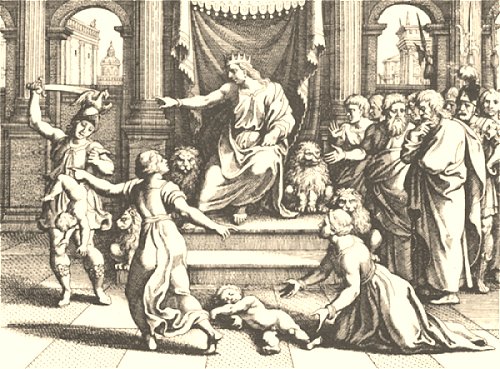A Tolerance for Ambiguity
Today, a tolerance for ambiguity. The University of Houston's College of Engineering presents this series about the machines that make our civilization run, and the people whose ingenuity created them.
The New York Times, Science Times can provide a fine view of the current science landscape. Take the one for Tuesday, March 23, 2004. Articles deal with medicine, nuclear power, and the environment.
The lead article is about Austrian scientist Gernot Zippe. He worked with the Luftwaffe in WW-II and was captured by the Russians. They assembled an elite German team to solve a tough problem -- separating out the rare isotope of uranium, U-235. It's very hard to do, whether for peaceful reactors or for bombs.
Zippe conceived a large array of high-speed centrifuges, each feeding the next with gas that's successively richer in U-235. The Russians let him go back to Austria in 1957. Since then, he's worked only on peacetime uses of his invention, and his centrifuges remain the primary means for obtaining U-235. As the technology improves, both power-production and bomb-making get easier.
Now, another article on the same page with equally tough ramifications: For years, I've wondered what's to become of gross anatomy in medical schools, as computers become capable of displaying every detail within our bodies. Well, now gross anatomy seems headed the way of high school shop courses. The class hours allotted to it dwindle, and so does the supply of qualified instructors. Medical schools are trying to decide how to deal with the subject.
On the surface of it, students have less sensate contact with what they'll be called on to do as doctors. On a deeper level, cutting into a cadaver, the former home of a living person, marks a profound passage from student to doctor. It puts in perspective, the doctor's absolutely unique relationship with living patients.
That Times article no more solves this problem than it resolves the implications of simplifying uranium enrichment. But good citizenship means living effectively with ambiguity and complexity. In a world where we're hammered by either/or political thinking, this is a wonderfully refreshing breath of air.
So, if you have patience for still more unresolved questions, look at the environmental articles in Science Times: A mountain railway in Montana is killing bears that wander onto the track. Elk are being paralyzed in southern Wyoming because they've wandered into an area where the lichen they find happens to be laced with usnic acid. The flying Kiwi birds, after whom New Zealanders name themselves, are suddenly dying off.
These troubles no more admit easy answers than those surrounding uranium and anatomy. A few inconspicuous inner pages of the newspaper thus remind us that science is really about developing patience and a high tolerance for ambiguity. Read only the front-page headlines, and you might think our world is nothing more than an unending collision of absolutes. Well it is not. Patience and concentration are still around to save us -- after all.
I'm John Lienhard, at the University of Houston, where we're interested in the way inventive minds work.
The New York Times, Science Times, Tue, March 23, 2004, pp. D1-8.

The Judgment of Solomon -- putting ambiguity to use (from Iconum Biblicarum, 1627)